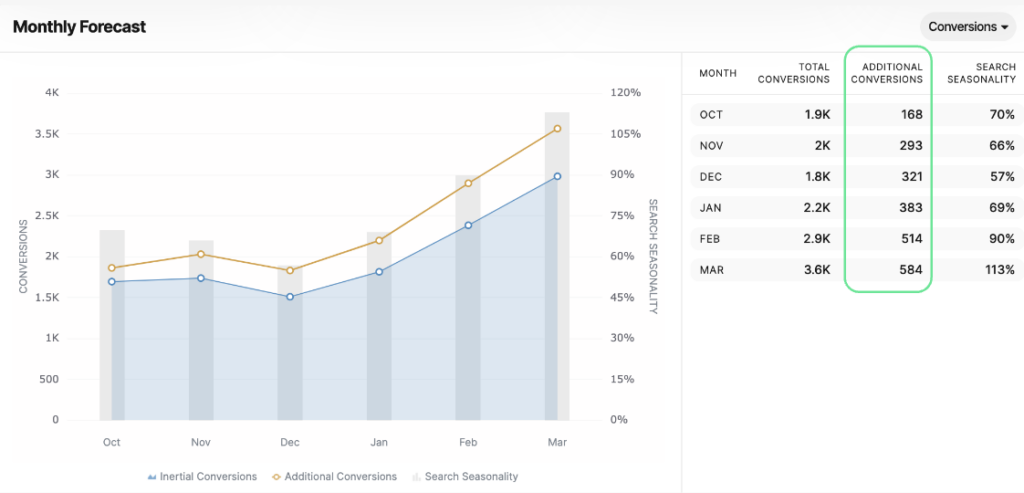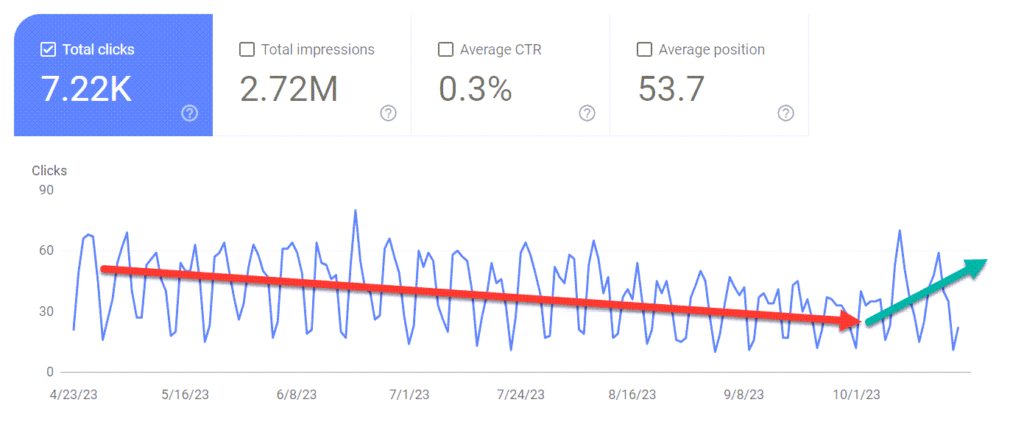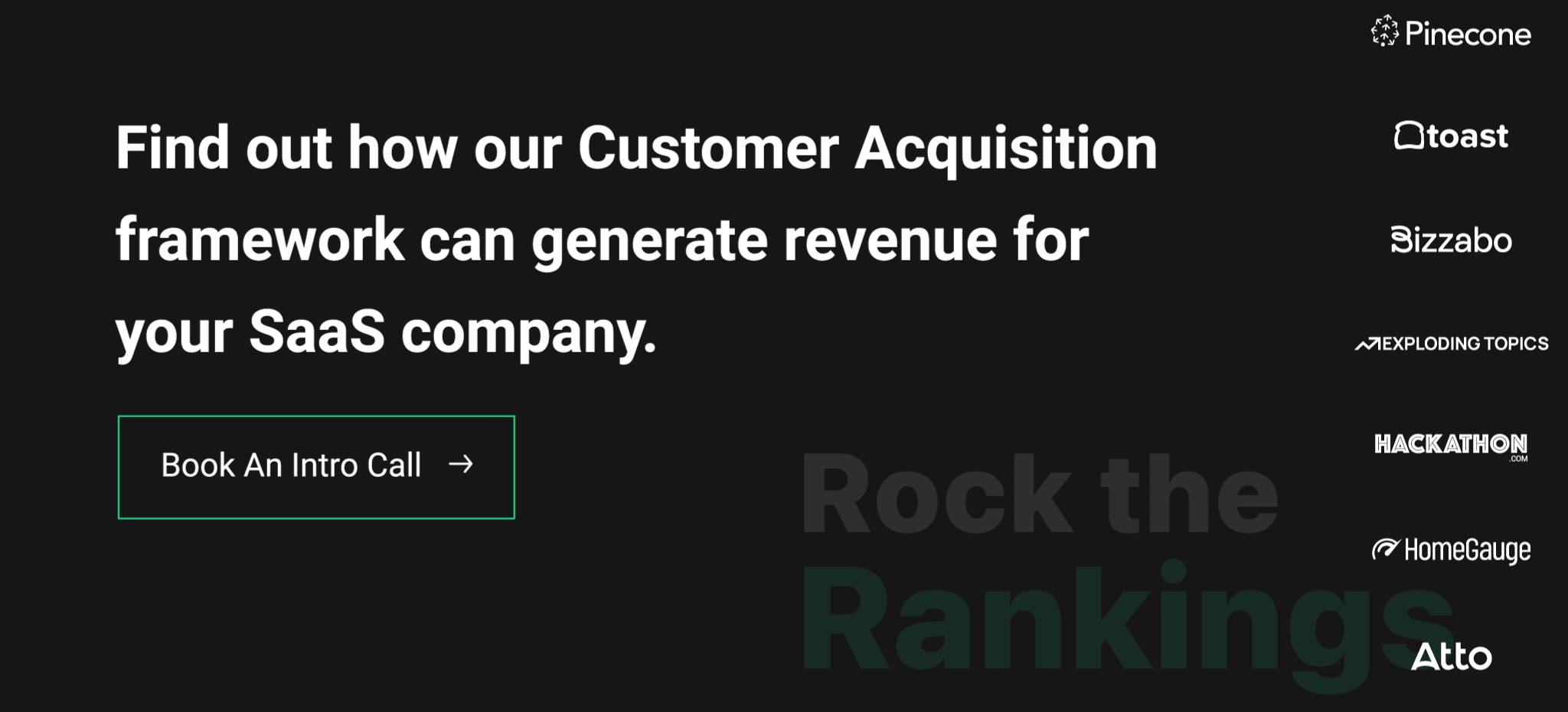Navigating the world of Enterprise SaaS SEO can be daunting, as securing top management support to implement significant changes often proves challenging.
A few of the common challenges we’ve seen that in-house SaaS marketers face include:
To overcome these obstacles and implement a campaign that gets real business results, it’s crucial to understand how to navigate the waters to make setting up SEO campaigns smoother.
In this article, we delve into forging a path toward effective buy-in, elevating your SEO approach, and ultimately driving pipeline and revenue for the business.
As enterprises grow in size, their processes tend to become slower and more bureaucratic, affecting the efficiency and innovativeness of the business, including its SEO strategies.
When several teams are responsible for a company’s website and SEO efforts, it can be difficult to agree on content initiatives, page optimizations, and PR campaigns.
To overcome the challenge of slow corporate processes in an enterprise software company, it’s critical to implement a two-pronged approach focused on agility and efficiency.
Our suggestion? Adopt agile marketing methods that emphasize flexibility and rapid iteration.
This would involve breaking down projects into smaller, manageable sprints, allowing for quicker completion and the ability to adapt on the fly.
For example:
We know the challenge of getting approval to work with a marketing agency and getting budget approval for 12+ months.
For most Enterprise SaaS companies, results can be had in the short term, assuming we can push the work through and execute.
That’s why we engage with all companies to start with a 90-day sprint to prove our efforts and build momentum and short-term results, which helps build the case for a longer-term engagement.
Further Reading: How Long Does SEO Take to Get Results?
This approach also helps forge strong relationships with key stakeholders by involving them early in project planning and keeping them updated on progress, such as leading indicators, to ensure they’re primed to expedite necessary approvals.
If we can get short-term wins at the start of a short-term engagement, we’ll have built the trust needed to move some of the heavier boulders that will stand in our way.
A significant obstacle for enterprise SaaS SEO is internal politics.
Disagreements among stakeholders and product and branding teams impede forming a unified vision of the company’s goals, making it difficult to execute campaigns and initiatives effectively.
Implementing a structured approach to data-driven and merit-based decision-making minimizes politics’ influence.
For any project or initiative, decisions should be made based on objective criteria, such as potential ROI, customer impact, or alignment with strategic goals, rather than personal influence or seniority.
This objective framework can be supported by a transparent feedback mechanism in which all team members feel heard and valued and constructive criticism is welcomed and acted upon.
Focusing on collaboration, clear communication, and objective decision-making can mitigate internal politics, enabling the marketing team to work more cohesively toward the company’s success.
Enterprise companies face long sales cycles involving multiple decision-makers, stakeholders, and influencers.
The conversion process may take months or even years, from initial contact to conversion.
Consequently, SEO efforts may not provide immediate results, making ROI evaluation and continuous campaign tracking challenging.
Employing leading indicators can be a powerful way to demonstrate early progress and maintain stakeholder buy-in.
Leading indicators are metrics that signal future success and can include website traffic, content engagement, lead quality scores, conversion rates for sign-ups or free trials, and the growth of marketing-qualified leads (MQLs).
Further Reading: Calculating ROI from SEO Efforts
By tracking these indicators, you can provide tangible evidence of marketing’s momentum and its potential to contribute to the company’s revenue in the long term while setting proper expectations on the front end.
Tech company stakeholders, who are usually in their mid-to-late 50s, have likely grown up with traditional marketing and sales infrastructure.
This generational gap may impede their understanding of the value of SEO and its crucial role in the company’s digital strategy.
It can also result in a lack of engagement with SEO and an unwillingness to allocate resources for it.
Cut the fluff, and focus on what’s driving business impact.
Tailor communication to highlight the direct impact of marketing activities on business objectives.
Create concise, data-driven reports that link marketing initiatives to key performance indicators (KPIs) such as lead generation, conversion rates, and return on investment (ROI).
These should be shared regularly to keep shareholders informed about the outcomes of marketing campaigns and the strategic rationale behind them.
By educating shareholders and clearly demonstrating the value of marketing through ongoing, focused communication, their buy-in and support for marketing initiatives can be significantly enhanced.
SEO is not just about increasing numbers – it also leads to a better buyer experience.
Nowadays, most customers avoid unsolicited calls, and B2B buyers typically gather significant information before engaging with sales.
Through SEO, businesses can reach their customers in the right channels, providing them with the information needed to make well-informed decisions.
SEO is vital for controlling digital presence and brand image in enterprise SaaS. It helps businesses counteract competitors’ threats and increase their visibility on search engines.
Companies can rank for numerous keywords and reclaim control over their digital presence by creating a wealth of additional content related to their brand.
Optimizing a website for search engines goes hand in hand with creating valuable content for users.
By crafting keyword-rich, relevant, and timely content, businesses can provide a positive customer experience while showcasing their expertise and authority in their industry.
Blogs, eBooks, case studies, and reports are great ways to achieve this goal.
An average enterprise sales cycle requires about eight touchpoints to close a deal.
SEO strategies, including content creation and link building, can create several opportunities for potential buyers to engage with a website, increasing their chances of becoming paying customers and reducing the sales cycle length.
Properly executed enterprise SEO can be an effective sales enablement tool.
With the right content, sales teams can educate buyers on the benefits and unique features of the product to resolve objections and close deals.
Businesses can use buyer engagement data to refine their content strategy and create targeted content that resonates with their audience.
The long-lasting nature of SEO sets it apart. It continues to drive traffic and sales even when businesses are not actively working on it.
This enables companies to create evergreen content, optimize existing traffic, and scale up sustainably over time.
While investing in sales talent and competitive search terms is essential, a strong SEO presence can provide a consistent flow of customers and significantly impact an enterprise company’s bottom line.
Formulate a clear vision of what success looks like for your SEO efforts.
This could be anything from increasing organic traffic by 10% to generating 100 qualified leads per month from organic search.
But how is that possible?
One core way we build out these scenarios before client engagements is by forecasting different organic growth scenarios and mapping those back against current metrics such as CAC, ACV, and T2P or D2P.

When it comes to actually defining clear goals and objectives, consider creating goals that are both monetary and non-monetary objectives:
Establishing clear goals and milestones, both monetary and non-monetary, are the core starting point before diving into a campaign.
Use a data-driven approach for your SEO strategy by setting up systems to track progress and key performance indicators (KPIs).

Some KPIs to monitor for SEO success include:
Tools like Google Analytics can be utilized to measure website traffic and engagement, monitor specific keywords, and track conversions from organic search.
Regularly refreshing older content is essential for maintaining relevance and authority in your industry.

Revamping outdated content by adding new data, improving writing quality, or creating content clusters around high-ranking pages can breathe new life into previously stagnant pages.
Further Reading: How to Conduct a Content Refresh
The refreshed content will continue to attract traffic and rank well in search engine results.
Enterprise companies possess a wealth of unique internal data that can be leveraged to create engaging content and establish thought leadership.
Publishing original research, case studies, and reports based on your company data can attract valuable backlinks and targeted leads.
While keywords are integral to driving organic traffic, they alone don’t guarantee success.
To capture a broader audience, focus on creating content around relevant topics in addition to optimizing for specific keywords.
Further Reading: Keyword Research for SaaS
This comprehensive approach will ensure that your content engages readers and ranks well in search engine results, even for niche topics and long-tail queries.
Produce content that caters to users at the bottom of the sales funnel, such as product pages, comparison articles, buyer’s guides, and tutorial content, to dominate search engine rankings.
This type of content directly addresses customer pain points and decision-making processes, increasing the likelihood of securing leads and conversions.
Such content complements top-of-the-funnel thought leadership and case study material.
To maintain a successful enterprise SEO strategy, scalability is critical.
Large-scale content creation involves a dedicated team researching keywords, designing content guidelines, and consistently producing quality material.
Further Reading: SaaS Content Strategy
Streamlining the content creation process ensures your website remains an authoritative, up-to-date, and valuable resource for your target audience in the ever-evolving digital landscape.

Enterprise SaaS SEO is not just about keywords and backlinks; it’s about strategically aligning with the organization’s pace and politics to create meaningful, revenue-driving campaigns.
The insights provided in this article help SaaS marketers secure the necessary buy-in, navigate internal complexities, and set up SEO initiatives that contribute to the bottom line.
By understanding the unique challenges of enterprise SaaS environments and adopting the outlined strategies, marketers can turn SEO into a powerful tool for long-term success, driving both pipeline and profit in a landscape where every click counts and every delay can cost opportunities.
Founder of Rock The Rankings, an SEO partner that helps B2B SaaS brands crush their organic growth goals. An avid fan of tennis, and growing micro-SaaS businesses on the weekend. 2x SaaS Co-Founder – Currently working to build and scale Simple Testimonial.
Book a 1-on-1 call with our founder and walk away with a custom plan built for your business. Growth starts now.
BOOK INTRO CALL